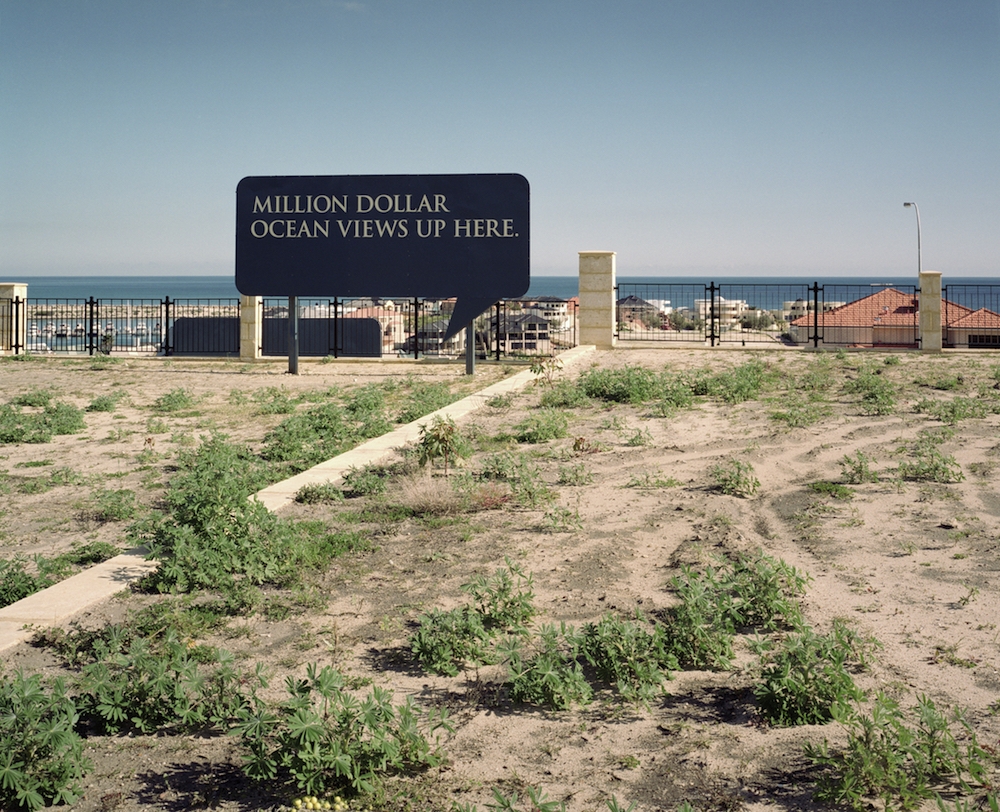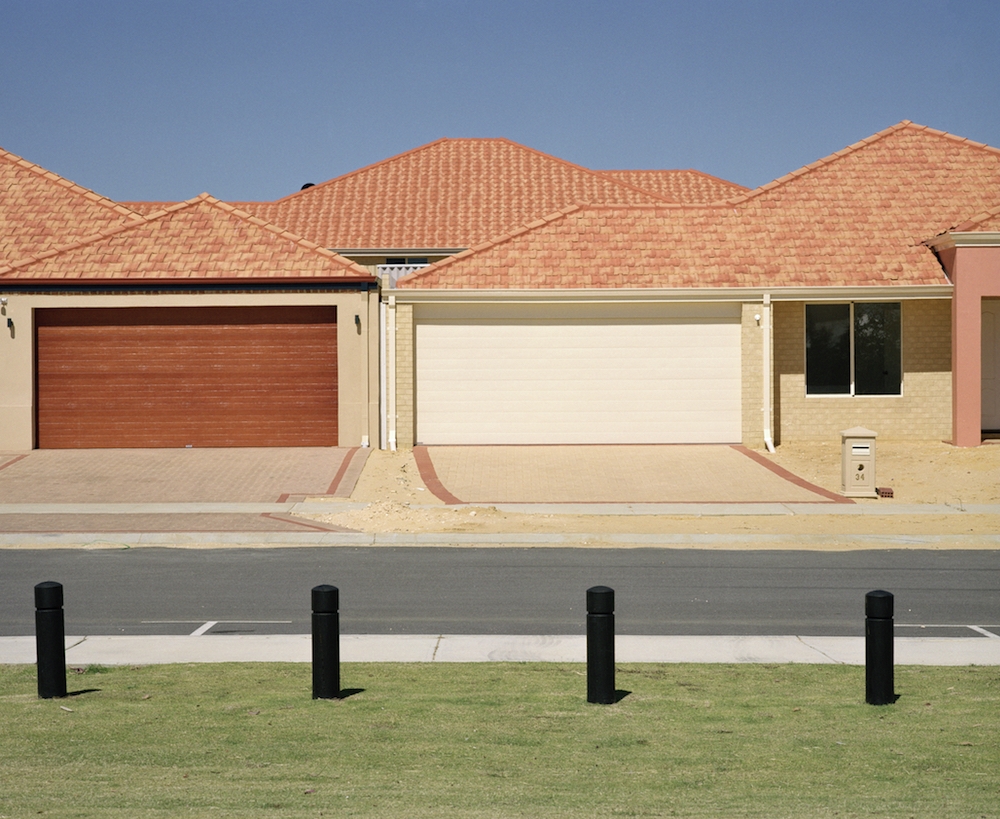Andreas Hagenbach
Million Dollar Ocean Views Up Here
6.5. —
2.7.2006


Artist Andreas Hagenbach, who was born in 1964 and lives and works in Basel, shows his series of photographs entitled Million Dollar Ocean Views Up Here and Paradise Just Gets Better as a slide projection and a video all created during his stays in Western Australia in the course of more than two years.
In this photographs and films the artist sheds light on a contemporary Australia marked by the principles of market economy that has precious little to do with the notion of an immigrants’ paradise or place of shelter. Hagenbach focuses on the suburbs of the city of Perth in which, for a number of years now, real estate speculators and developers have shown a keen interest. What they strive to do is to create housing for new immigrants and to offer as many residential units as possible to overseas investors. As is shown by Hagenbach’s video, the vegetation of large tracts of land is entirely wiped out, down to the last blade of grass, and the ground leveled to carry out huge housing projects. Monstrous excavators dig into the soil, removing one layer after the other. This destructive machinery conjures up science-fiction imagery, exterminating every single plant.
Apart from this annihilation of all types of vegetation, the building boom — as illustrated by Hagenbach’s photographs — has also given rise to monotonous and stereotypical residential units. Ground plans and layouts are identical, plot sizes seem to be as uniform as possible, and as soon as a home has been built and its amenities finished they serve as a model for all subsequent ones. But all of this can only be observed as long as the homes are not surrounded by fencing, making us think of high-end top-security gated communities.
Homes along the coastline operate with visual codes that express wealth, but no questions are asked about the origin or genesis of symbols. We see architectural elements whose original function is no longer valid. This is evidenced by those ubiquitous lion sculptures flanking doors or driveways—in contrast to their genuine archaic models, they don’t have any deterrent effect anymore. Rather than being awe-inspiring, they are soulless, interchangeable, empty shells that may be construed as typical features of ‘rich living’. The aestheticism of Hagenbach’s pictures stresses the de-individualization and ubiquity of coastline homes. His frontal-view photographic cutouts show façades, fences, and spaces filtering out what is behind. The uniformity of residential projects and their ‘shell-like’ nature is emphasized by the choice of picture cutouts. The slogan used by a real estate agent to advertise these alleged new dream homes says it all: “The search for the ultimate coastal lifestyle ends here.”
In his photographs, Hagenbach explores the paradoxes of rich and de-individualized living, as well as the dichotomy between happiness and the eradication of our nature (knowing that an unharmed nature is a precondition for our happiness). He confronts us with an Australia off the beaten tourist tracks that is all too happy to adapt to global developments and thus often loses its originality. “His frontal cutouts are neutral chroniclers and let our roving gaze bounce off the façades with their darkened windows. This emphasizes the status of being an outsider or, viewed differently, a prisoner.” (Eva Scharrer)